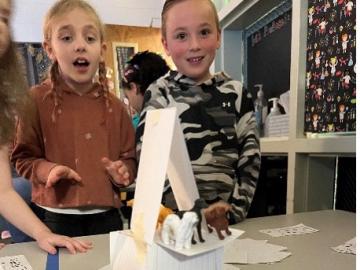Filter News
Area of Research
- (-) Clean Energy (168)
- Advanced Manufacturing (5)
- Biological Systems (1)
- Biology and Environment (102)
- Biology and Soft Matter (4)
- Building Technologies (2)
- Chemical and Engineering Materials (3)
- Chemistry and Physics at Interfaces (7)
- Climate and Environmental Systems (7)
- Computational Biology (1)
- Computational Chemistry (5)
- Computational Engineering (1)
- Computer Science (3)
- Data (1)
- Earth Sciences (1)
- Electricity and Smart Grid (1)
- Energy Frontier Research Centers (7)
- Fuel Cycle Science and Technology (2)
- Functional Materials for Energy (8)
- Fusion and Fission (32)
- Fusion Energy (7)
- Geographic Information Science and Technology (1)
- Isotopes (21)
- Materials (122)
- Materials for Computing (13)
- Materials Synthesis from Atoms to Systems (8)
- Materials Under Extremes (7)
- National Security (45)
- Neutron Data Analysis and Visualization (2)
- Neutron Science (72)
- Nuclear Science and Technology (27)
- Quantum Condensed Matter (3)
- Quantum information Science (4)
- Renewable Energy (2)
- Sensors and Controls (2)
- Supercomputing (153)
- Transportation Systems (4)
News Type
News Topics
- 3-D Printing/Advanced Manufacturing (22)
- Advanced Reactors (2)
- Artificial Intelligence (2)
- Bioenergy (10)
- Biology (4)
- Biomedical (2)
- Biotechnology (1)
- Buildings (11)
- Chemical Sciences (3)
- Clean Water (3)
- Climate Change (8)
- Composites (2)
- Computer Science (7)
- Coronavirus (5)
- Cybersecurity (5)
- Decarbonization (15)
- Energy Storage (20)
- Environment (18)
- Fossil Energy (1)
- Grid (13)
- High-Performance Computing (2)
- Materials (5)
- Materials Science (4)
- Mathematics (1)
- Mercury (1)
- Microelectronics (1)
- Microscopy (2)
- Nanotechnology (2)
- National Security (1)
- Net Zero (1)
- Neutron Science (2)
- Nuclear Energy (2)
- Partnerships (4)
- Polymers (1)
- Quantum Science (1)
- Security (3)
- Simulation (1)
- Space Exploration (1)
- Summit (2)
- Sustainable Energy (14)
- Transportation (17)
Media Contacts

Having passed the midpoint of his career, physicist Mali Balasubramanian was part of a tight-knit team at a premier research facility for X-ray spectroscopy. But then another position opened, at ORNL— one that would take him in a new direction.

Inspired by one of the mysteries of human perception, an ORNL researcher invented a new way to hide sensitive electric grid information from cyberattack: within a constantly changing color palette.

As a researcher in power electronics, Shajjad Chowdhury is focused on exceeding capacity. In a lab space at the National Transportation Research Center at ORNL, he’s developing a novel capacitor and inverter component that will shrink the size and reduce the cost of electric drive units. He sees this as a potential step to increase electric vehicle adoption in the United States.

On the grounds of the University of Maine’s Advanced Structures and Composites Center sits the nation’s first additively manufactured home made entirely from biobased materials - BioHome3D.

Researchers at ORNL are helping modernize power management and enhance reliability in an increasingly complex electric grid.

Nine engineers from ORNL visited 10 elementary and middle school classrooms in three school districts during National Engineers Week, Feb. 21 to 24, 2023, describing and demonstrating the excitement of the engineering profession to more than 300 Tennessee students.

ORNL is teaming with the National Energy Technology Laboratory to jointly explore a range of technology innovations for carbon management and strategies for economic development and sustainable energy transitions in the Appalachian region.

The Department of Energy’s Center for Bioenergy Innovation, led by Oak Ridge National Laboratory, recently added three new members to its board of directors: Deborah Crawford of the University of Tennessee, Knoxville; Susan Hubbard of ORNL; and Maureen McCann of the National Renewable Energy Laboratory.

David McCollum, a senior scientist at the ORNL and lead for the lab’s contributions to the Net Zero World Initiative, was one of more than 35,000 attendees in Egypt at the November 2022 Sharm El-Sheikh United Nations Framework Convention on Climate Change, or UNFCCC, Conference of the Parties, also known as COP27.

Stor4Build is a new consortium focused on energy storage for buildings that will accelerate the growth, optimization and deployment of storage technologies.




